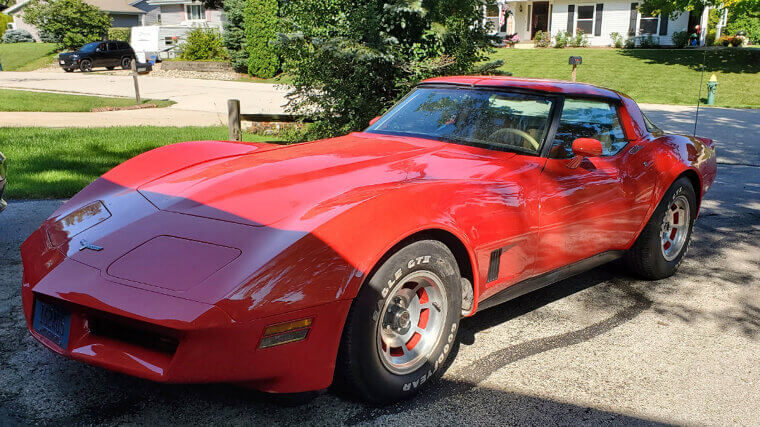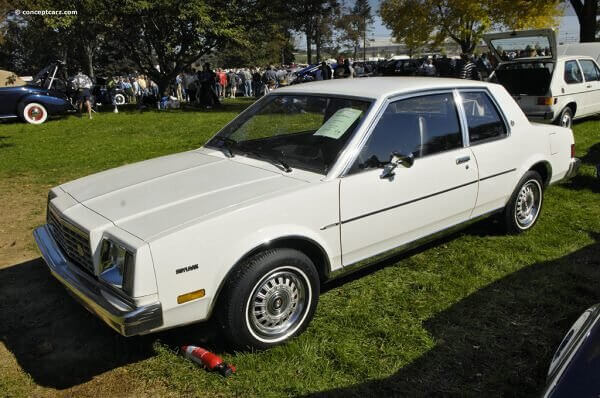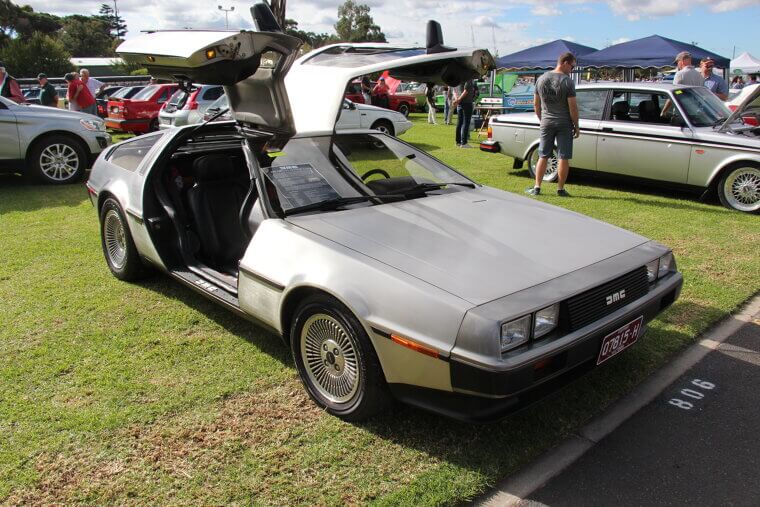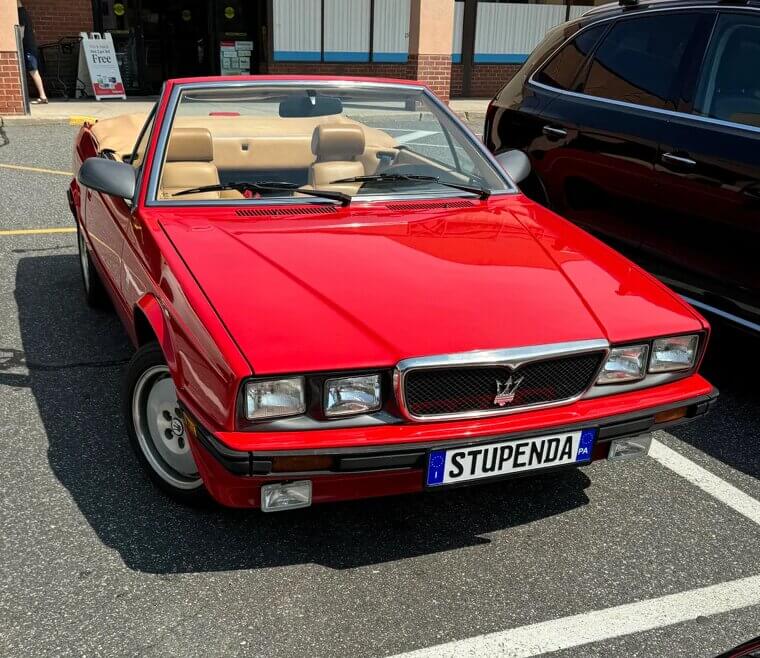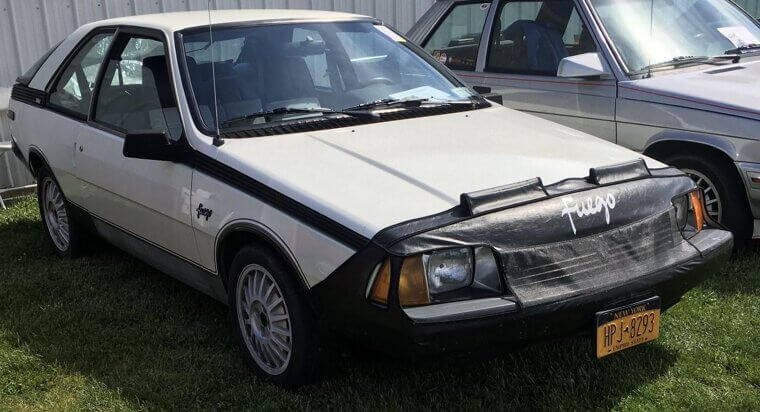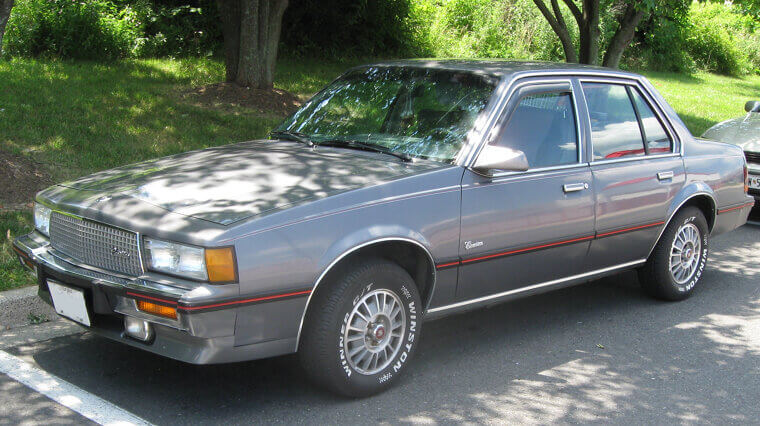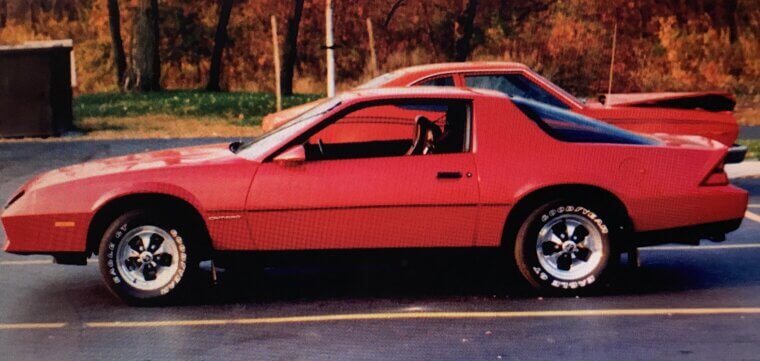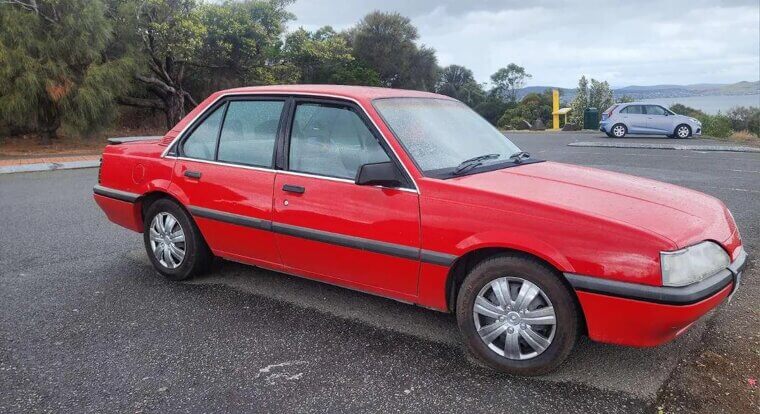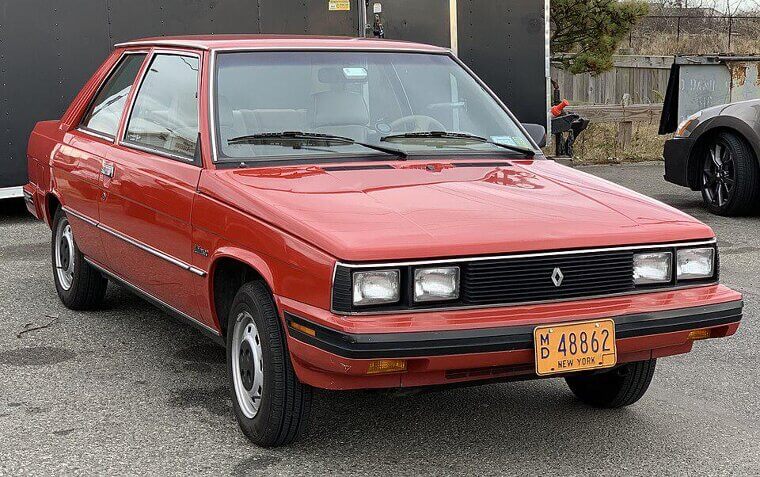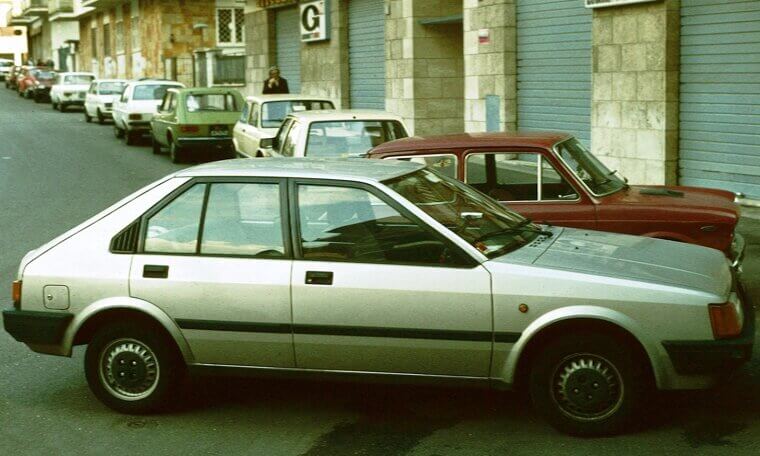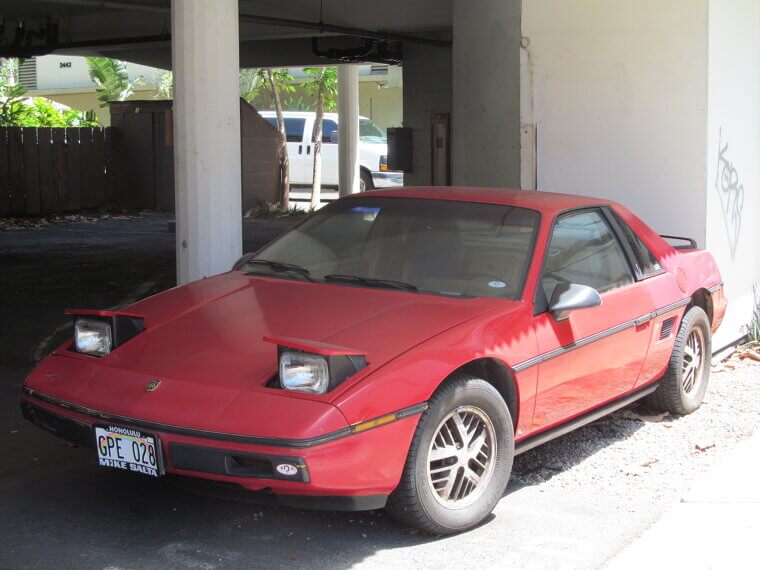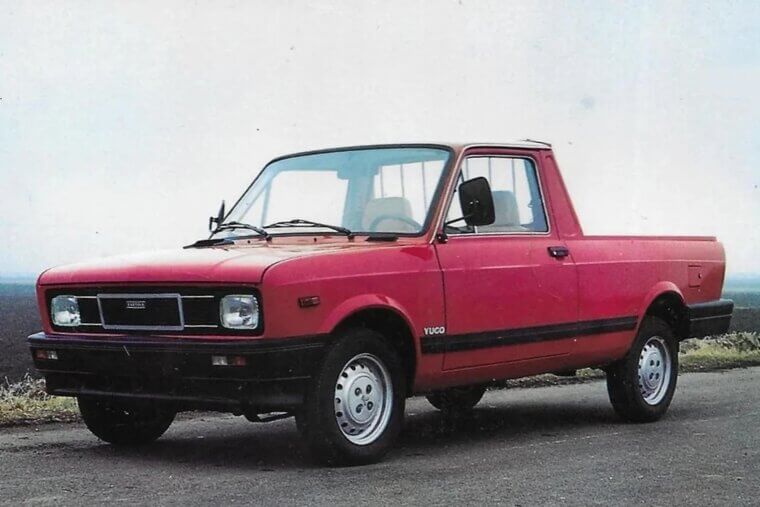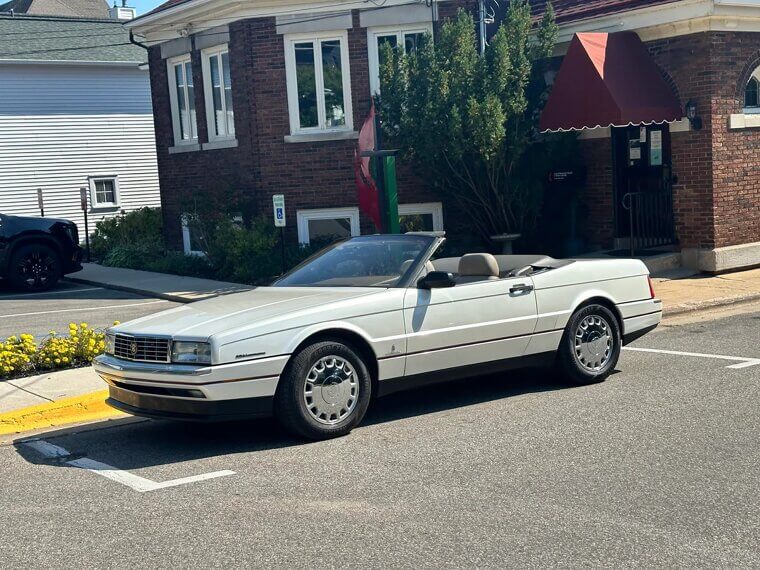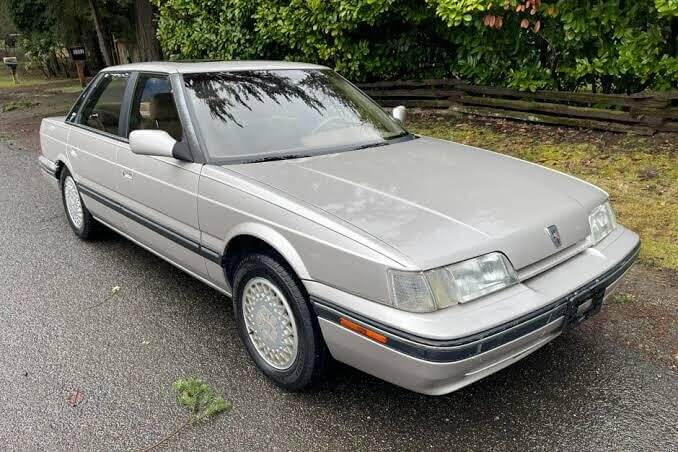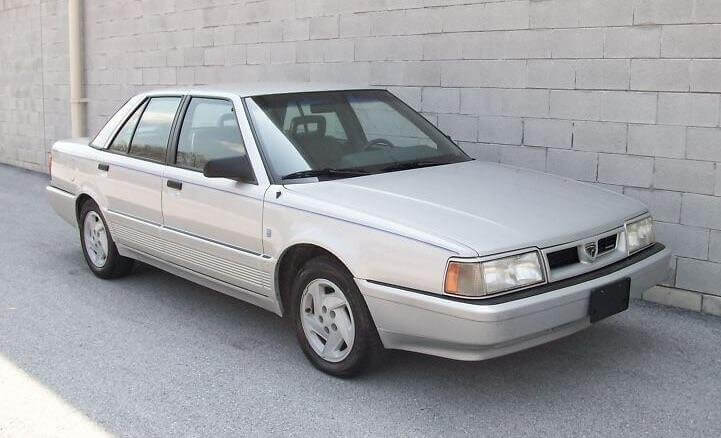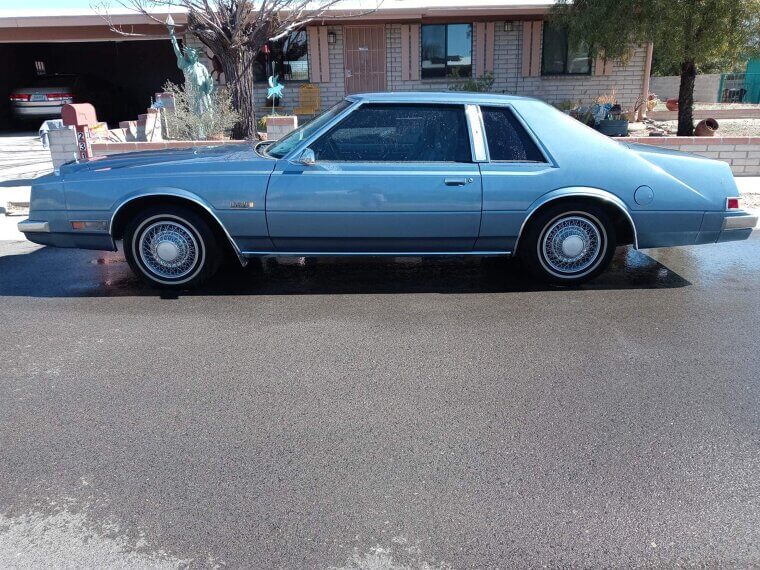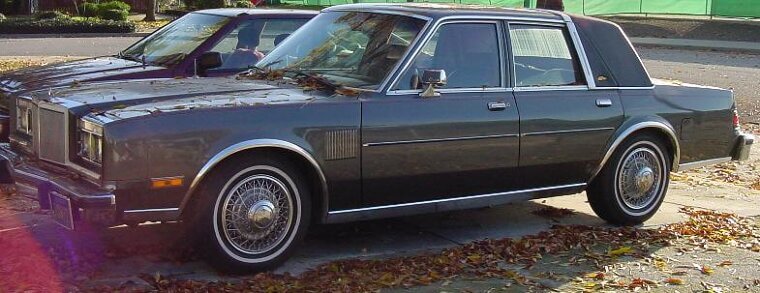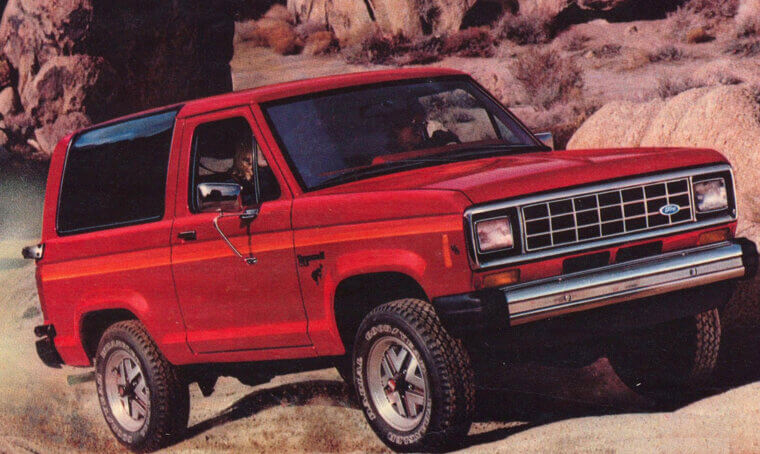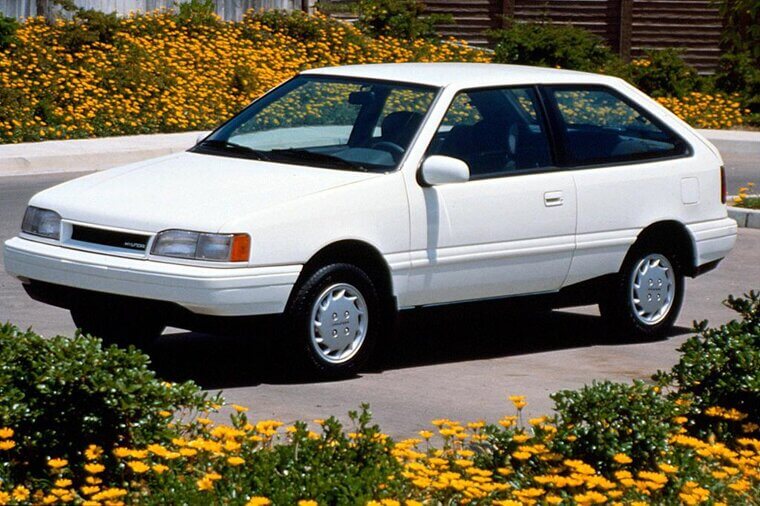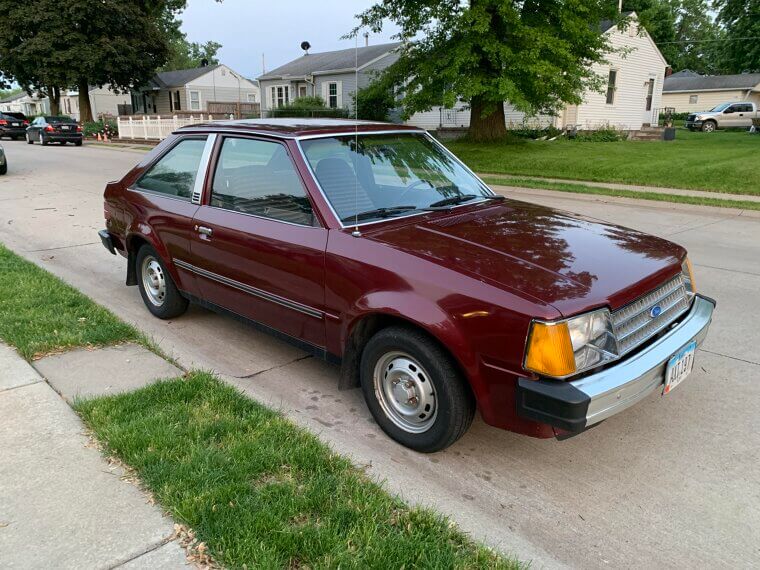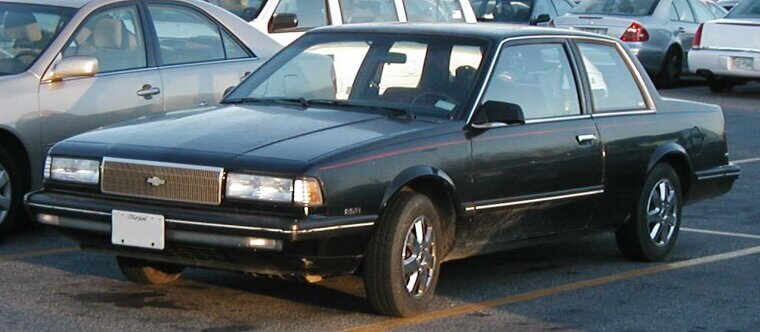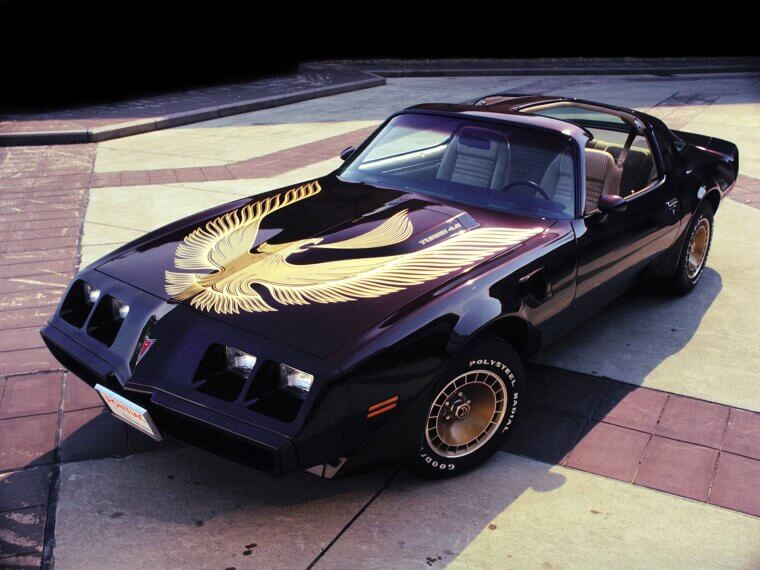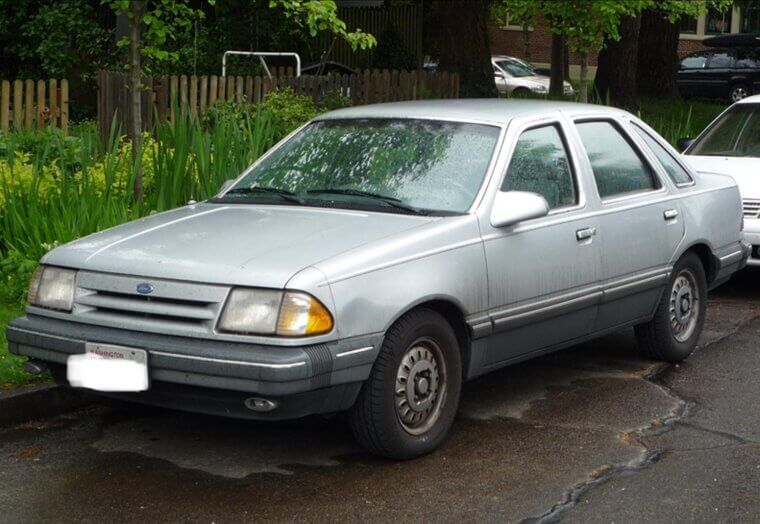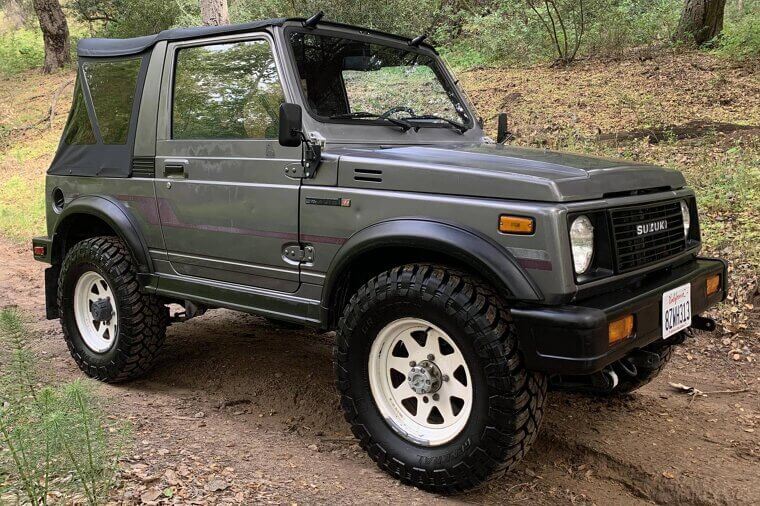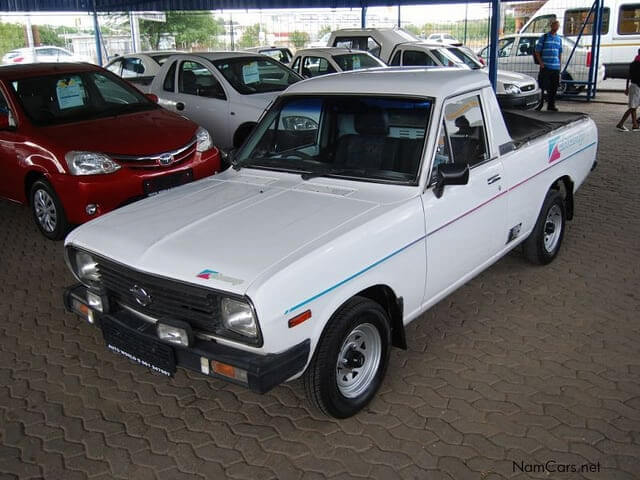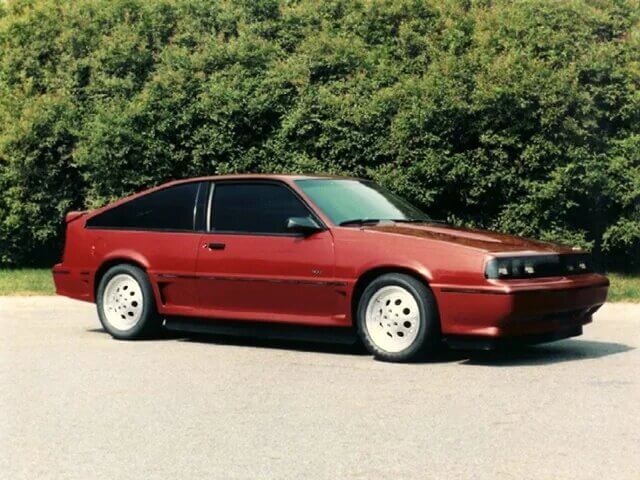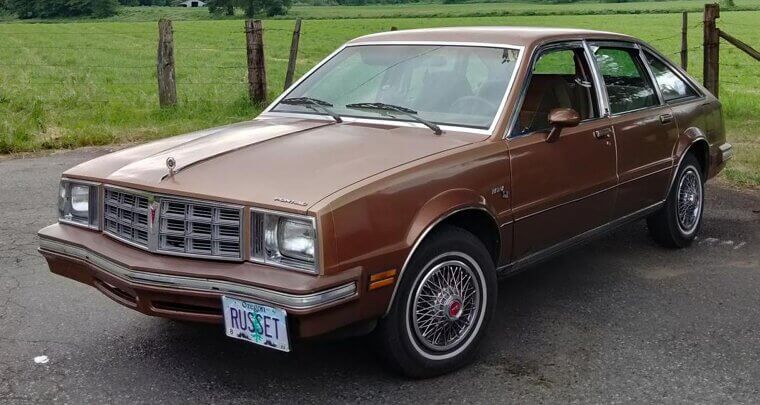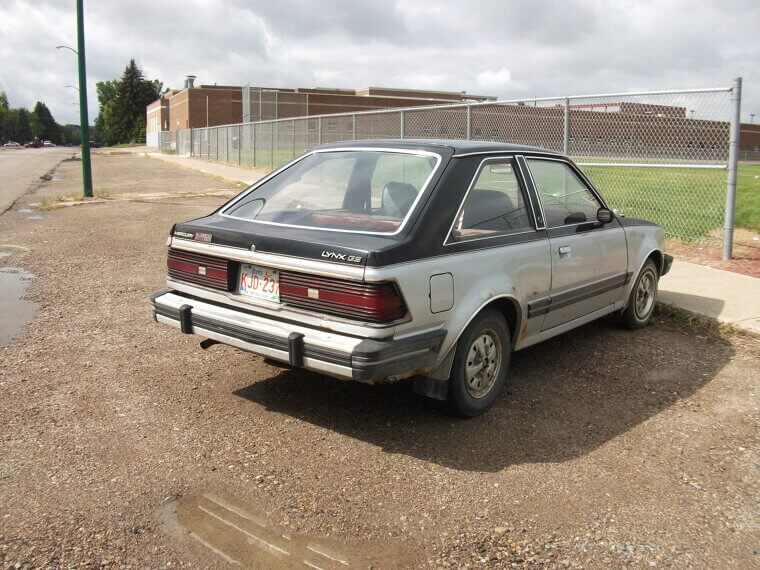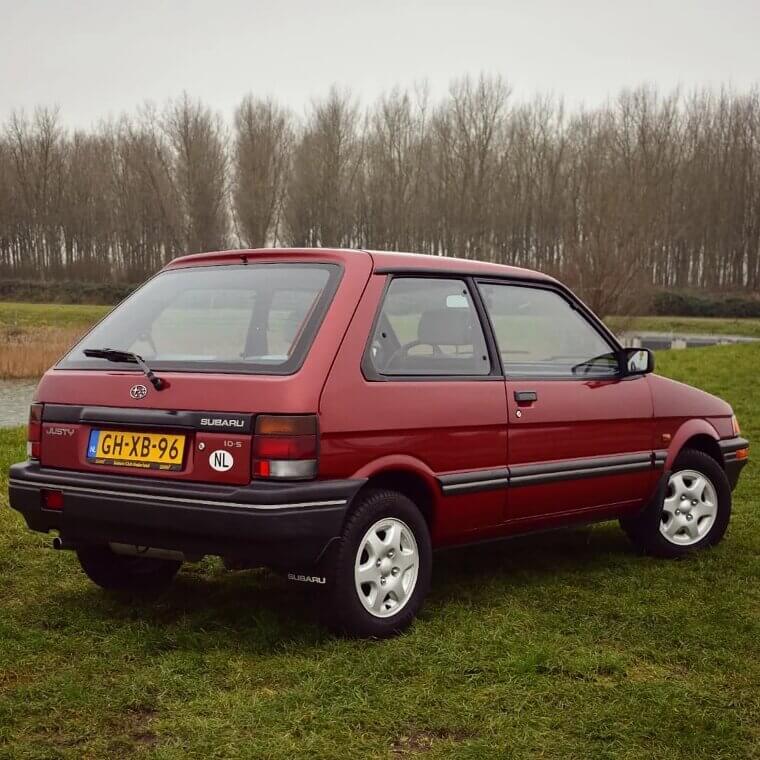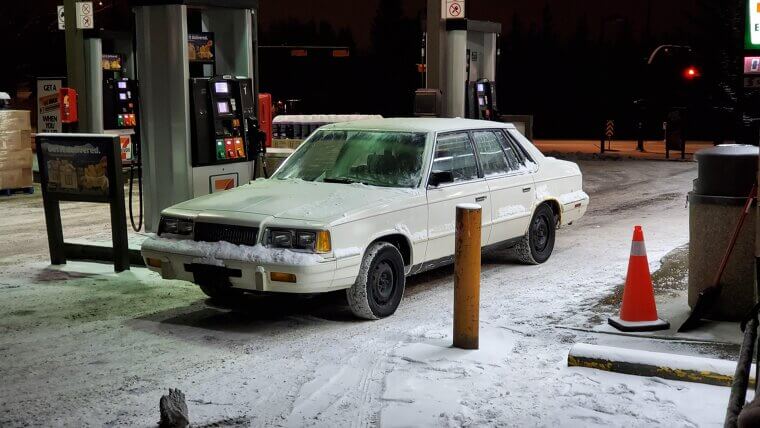Chevrolet Corvette 305 "California" (1980)
America's sports car icon, neutered. California emissions regulations forced Chevy to shoehorn a wheezing 305 cubic-inch V8 under the Corvette's hood, producing a humiliating 180 horsepower. Collector guides warn buyers to avoid it entirely, as this embarrassment will never be appreciated and remains absent from official Corvette histories.
General Motors X Platform Compact Cars (1980–85)
GM's Citation, Skylark, Omega, and Phoenix debuted as the 1980s Motor Trend Car of the Year before spectacularly imploding. The trim fell off, the transmissions seized, and torque steer was so severe that GM secretly modified press cars to hide it.
Cadillac V8-6-4 (1981)
Cadillac's cylinder deactivation system promised fuel economy without sacrificing luxury V8 smoothness; a technological marvel that would've been impressive if it actually worked. The primitive brain suffered constant confusion, randomly shutting off cylinders while lurching, bucking, and stalling furiously. Dan Neil called it the "Titanic of engine programs."
The V8-6-4 was bad. The DeLorean was worse…
The V8-6-4 was bad. The DeLorean was worse…
DMC DeLorean (1981–83)
Stainless steel gullwing doors and Back to the Future fame couldn't save John DeLorean's disaster. The 130-horsepower V6 delivered performance slower than base Camaros and cost more than a Corvette. At $25,000 during a recession, buyers basically paid exotic-car money for a slug.
Maserati Biturbo (1981–94)
Italian exotica for Camry money sounds tempting until you realize why it was Camry money. Turbos exploded, electronics failed with malicious enthusiasm, and the things rusted faster than shipwrecks. Reviewers joked it broke “with the regularity of the Anvil Chorus.”
Renault Fuego (North American Version) (1982–84)
French for "fire," the Fuego burned American buyers with spectacular incompetence. It overheated, rusted, and sometimes had steering wheels that literally came off. Between head-gasket failures and vanishing spare parts, most burned out or broke down long before their owners’ patience did.
A cheap Chevy that almost killed the Cadillac name…
A cheap Chevy that almost killed the Cadillac name…
Cadillac Cimarron (1982–88)
Cadillac genuinely believed it could slap wreath-and-crest badges on a Chevrolet Cavalier, upholster the interior in velour, and somehow compete with BMW's 3 Series. It was priced twice as high as the Cavalier and was just as slow. Critics called it “GM’s biggest shame,” and even Cadillac execs now admit it nearly killed the brand.
Chevrolet Camaro Equipped With the Iron Duke Engine (1982–85)
A muscle car with no muscle. The Iron Duke produced 90 horsepower… in a pony car. Buyers expected to get their hands on some tire-shredding acceleration, but instead got 0-60 times measured in days. Reviewers said it was slower than a Beetle and easily humiliated by K-car wagons.
Holden Camira (1982–89)
Australia’s “Car of the Year” quickly became a national embarrassment. The Camira's Nissan-sourced engine threw tantrums constantly, while build quality suggested assembly by hungover wallabies. Smoking engines, melting paint, and overheating air-conditioned models plagued the Camira, while crash tests ranked its safety below average.
Thought we'd hit rock bottom? Hah! There are many worse ones to come…
Thought we'd hit rock bottom? Hah! There are many worse ones to come…
The Renault Alliance (1983–87)
The Renault Alliance (1983–87) was meant to merge French flair with American practicality, but instead became a rusting punchline. Initially praised and even named to Car and Driver’s 10 Best, it later earned scorn for shoddy build quality, vanishing resale value, and what critics called “a K-car wannabe” assembled with indifference.
Alfa Romeo Arna (1983–87)
When Alfa Romeo and Nissan collaborated, enthusiasts expected a fusion between Italian passion and Japanese reliability. Instead, they got the Arna: a car combining Nissan's boring styling with Alfa's legendary unreliability in what Clarkson called “a truly horrific cross-breed.”
Pontiac Fiero (1984–88)
The Pontiac Fiero (1984–88) looked like a mid-engine dream but drove like a budget GM experiment gone wrong. Early models caught fire with alarming regularity, with the Iron Duke four-cylinder base engine delivering underwhelming performance. By the time GM finally sorted it out, nobody cared.
We're entering the danger zone now…
We're entering the danger zone now…
Yugo (1985–92)
Yugoslavia's gift to American motorists cost $3,990 and was worth approximately $47. Built cheaply in Yugoslavia, it rattled, rusted, and broke faster than you could fill the tank. Consumer Reports called it a “barely assembled bag of bolts,” and Clarkson simply dubbed it “a hateful, hateful car.”
General Motors E-Body Luxury Cars (1986–93)
GM's Riviera, Toronado, and Eldorado went front-wheel-drive with rounded, aerodynamic styling that made them look like suppositories. Traditional buyers who wanted imposing luxury barges hated these downsized soap bars. Sales collapsed by nearly 90%, leaving GM’s luxury reputation in ruins.
Cadillac Allanté (1987–93)
GM’s luxury convertible aimed at Mercedes but missed badly. Heavy, front-wheel-drive, and painfully slow, the Allanté was mocked as “all show, no go.” Its leaky roof, costly brake issues, and $54,000 price tag sealed its fate, selling fewer than 5,000 units a year and earning a lasting reputation as GM’s most misguided vanity project.
Your eyes aren't deceiving you. They were all actually this bad…
Your eyes aren't deceiving you. They were all actually this bad…
Sterling 825/827 (1987–91)
A rebadged Rover 800 built for the U.S., the Sterling 825 promised Japanese reliability and British luxury, but delivered neither. It was plagued by electrical failures, rust, poor assembly, and fading interiors, becoming a textbook case of transatlantic failure.
Eagle Premier (1988–92)
Chrysler's acquisition of American Motors included this Renault 25-based sedan, representing everything wrong with badge-engineering and French automotive philosophy. It had poor reliability, badge confusion, and zero excitement. Jalopnik dubbed it “a Renault cluster gone wrong,” and Edmunds ranked it among the worst cars ever made.
Chrysler TC by Maserati (1989–91)
A doomed lovechild of Chrysler and Maserati, the TC arrived overpriced, underpowered, and embarrassingly similar to the cheaper LeBaron. Critics called it “a Milan-built K-car in designer shoes,” while Edmunds dubbed it both the worst Maserati and Chrysler ever.
The Maserati cost Chrysler millions, but this next one apparently cost nothing to build…
The Maserati cost Chrysler millions, but this next one apparently cost nothing to build…
Lada Riva / Lada Nova (Early 1980s)
The Lada Riva/Nova trotted into export markets with 1960s Fiat tech, minimal safety and build standards, and a price tag no one believed. British importers spent 15 percent of the sticker price fixing each car to meet minimal standards. It scored zero stars in crash tests. Zero.
Chrysler Imperial (1981)
Lee Iacocca's company, teetering on the edge of bankruptcy, somehow greenlit this bustle-back disaster. It was an $18k flagship based on the Aspen-era platform, with a sloth-speed 318 V8 and futuristic digital instrumentation that promptly glitched out. A luxury failure that even Sinatra regretted.
Chrysler Executive (1983)
Drunk on K-car success, Chrysler stretched the LeBaron's wheelbase, added weight, and called it a limousine, only to power it with a 101 hp 2.6-liter four, and a three-speed auto. Essentially a boardroom limo that couldn’t even board a hill.
The Executive had no purpose, but the Bronco II had a terrible one.
The Executive had no purpose, but the Bronco II had a terrible one.
Ford Bronco II (1984–90)
Ford knew this thing was tipping over before it hit the road, but launched it anyway. Based on a narrow-track Ranger platform with a high center of gravity, the Bronco II earned a reputation for rolling like a drunk bowling ball. Settlements reportedly topped $2.4 billion from rollover lawsuits.
Hyundai Excel (Mid-1980s)
Korea's first assault on American markets arrived at $4,995, and you definitely got what you paid for. The Excel excelled at absolutely nothing except rapid depreciation and component failure. It moved, sometimes. Mostly, it stood still.
Ford Escort (Early 1980s)
Ford's replacement for the ancient Pinto somehow felt more primitive than its predecessor. American-built Escorts featured US-only engines and suspension and drove like a punishment. As Car and Driver’s David E. Davis Jr. put it, the clutch “had this feeling in use… like something was about to break.”
Does naming a car Celebrity make it famous? Yes… but for all the wrong reasons.
Does naming a car Celebrity make it famous? Yes… but for all the wrong reasons.
Chevrolet Celebrity (1982–90)
GM's A-body mid-sizer represented peak automotive beige: completely forgettable transportation bereft of character, excitement, or reason for existing beyond fleet sales. The Celebrity wasn't offensively terrible; it was offensively boring, and the automotive equivalent of unflavored oatmeal.
Pontiac Trans Am Turbo (1980s)
Pontiac's turbocharged 301 V8 promised muscle car performance from a downsized engine but delivered turbo lag. When the boost finally arrived, the meager 200 horsepower felt disappointing. Turbo reliability was iffy, economy wasn’t improved, and the whole exercise felt like overpriced mediocrity.
Oldsmobile Delta 88 Diesel (1980)
GM's diesel conversion of its gasoline V8 became legendary for all the wrong reasons. The engines blew head gaskets, cracked blocks, and self-destructed faster than owners could say “warranty.” The result? Thousands of stranded Oldsmobiles and a nationwide distrust of diesel that lasted for decades.
Blown head bolts versus the High Swirl Combustion engine. Decisions, decisions…
Blown head bolts versus the High Swirl Combustion engine. Decisions, decisions…
Ford Tempo (1984 Onward)
Ford's replacement for the Fairmont arrived as a rounded, aerodynamic economy car that drove like an overcooked potato. The CVH four-cylinder did not sound right, the handling was soft, and the build quality varied wildly between "questionable" and "alarming." Present, forgettable, and vaguely disappointing throughout its existence.
Suzuki Samurai (Mid-1980s)
Suzuki's little off-roader looked like a toy Jeep, but the fun stopped once you hit highway speeds. Consumer Reports famously warned it could “roll over too easily.” In retaliation, Suzuki sued furiously, and the resulting controversy obliterated sales.
Nissan 1400 (1980s)
South Africa’s beloved workhorse was rugged, but only if your expectations were prehistoric. Based on old Datsun 1200 underpinnings, the Nissan 1400 offered minimal comfort, shaky handling, and a cabin made of plastic that felt like it came straight from a milk bottle factory. Oh, and it had almost no safety features.
Oldsmobile Firenza (Early 1980s)
Another J-car platform victim, the Firenza was Oldsmobile's compact offering that nobody wanted or needed. It had zero personality, a wheezy engine, and a build quality that would immediately make you question your purchase decision.
Just a few more automotive disasters to go…
Just a few more automotive disasters to go…
Pontiac Phoenix (Early 1980s)
The Phoenix was Pontiac's X-car variant, meaning it inherited all those catastrophic braking problems, transmission failures, and quality disasters that made the Citation infamous. Pontiac added different front-end styling and interior trim, which accomplished absolutely nothing meaningful.
Mercury Lynx (1981 Onward)
Ford's Mercury division took the mediocre Escort, added slightly different trim, and called it the Lynx. This rebadging exercise fooled nobody, especially since the Lynx inherited every one of the Escort's numerous shortcomings, including the underpowered CVH engine, vague handling, and cheap interior materials.
Subaru Justy (Late 1980s)
Subaru's tiny three-cylinder econobox arrived as the company's cheapest offering, and boy, did it feel cheap. The 66-horsepower engine made highway merging feel like Russian roulette and delivered fuel economy comparable to larger, more powerful competitors.
Plymouth Caravelle (1983 Onward)
Plymouth slapped the Caravelle badge on a reborn Dodge 600 ( which was itself a stretched K‑car) and called it upscale. What was under that makeover? The same underpowered engines, the same sketchy build quality, and the same bad idea.

